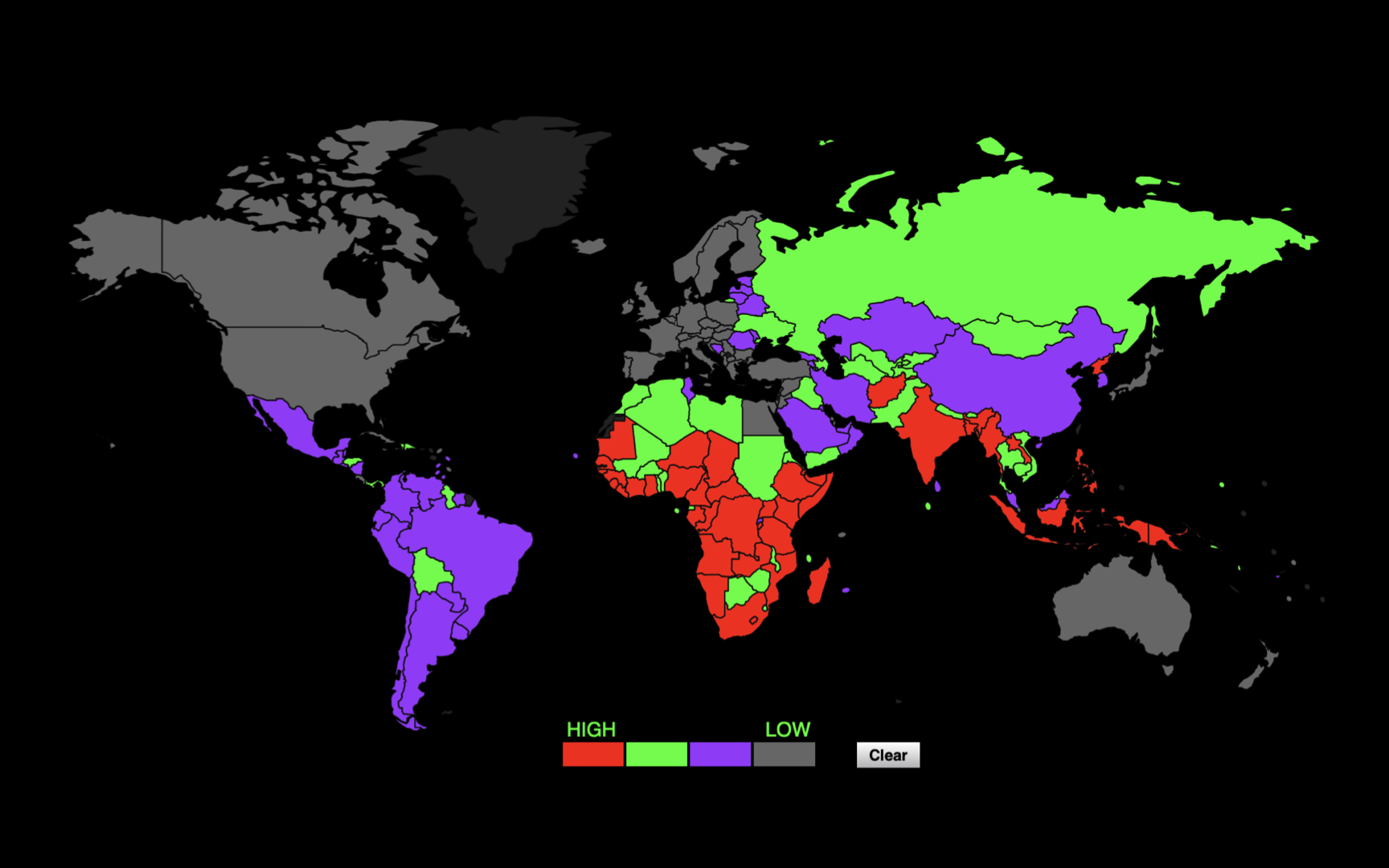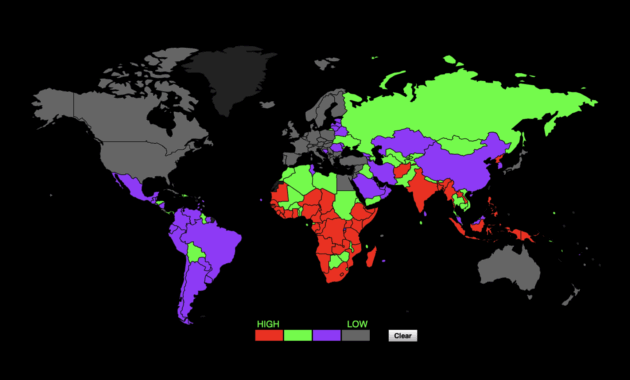Navigating the complex landscape of global healthcare, one quickly encounters the stark realities faced by low-income countries. The challenges are multifaceted, impacting access to basic services, advanced technologies, and specialized medical care. It’s a world where resource scarcity demands innovation and resilience, and where even the most fundamental diagnostic tools can make a monumental difference.
Radiology in Low Income Countries

Radiology, often taken for granted in wealthier nations, plays a pivotal role in diagnosis and treatment across a vast spectrum of medical conditions. From identifying fractures and infections to detecting tumors and assessing organ function, imaging technologies provide crucial insights that guide clinical decision-making. However, in low-income countries, access to radiology services is often severely limited, resulting in delayed diagnoses, inadequate treatment, and ultimately, poorer health outcomes. The absence of even basic X-ray machines in rural clinics can mean the difference between early intervention and a debilitating or life-threatening condition. The lack of trained radiologists and technicians further exacerbates the problem, leaving existing equipment underutilized or improperly maintained.
Consider the impact of limited access to chest X-rays in the context of tuberculosis (TB), a disease disproportionately affecting low-income populations. Early detection is crucial for preventing the spread of TB and initiating timely treatment. Without readily available X-ray services, individuals with TB may remain undiagnosed for extended periods, unknowingly transmitting the infection to others. Similarly, in the realm of maternal health, ultrasound imaging plays a critical role in monitoring pregnancies, detecting complications, and ensuring safe deliveries. The absence of ultrasound services in rural areas can lead to increased maternal mortality rates, as potential problems such as ectopic pregnancies or placental abnormalities go undetected.
Addressing these challenges requires a multi-pronged approach that encompasses infrastructure development, workforce training, and technology innovation. Investing in the construction and maintenance of radiology facilities, particularly in underserved areas, is essential. This includes providing a reliable power supply, ensuring adequate ventilation, and implementing robust infection control measures. Furthermore, training programs for radiologists, technicians, and maintenance personnel are crucial for building a sustainable workforce capable of operating and maintaining imaging equipment. Tele-radiology, the practice of interpreting images remotely, offers a promising solution for bridging the gap in expertise. By leveraging technology to connect radiologists in urban centers with healthcare providers in rural areas, tele-radiology can expand access to specialized diagnostic services.
Innovation in imaging technology is also playing a vital role in improving access to radiology in low-income countries. Portable and affordable ultrasound machines, for example, are transforming the landscape of maternal healthcare in remote areas. These devices can be easily transported and operated by trained midwives or nurses, allowing for early detection of pregnancy complications and timely referral to specialist care. Similarly, low-dose X-ray machines and digital radiography systems are reducing radiation exposure and improving image quality while minimizing the need for costly film processing. Furthermore, artificial intelligence (AI) is emerging as a powerful tool for assisting in image interpretation, particularly in settings where radiologists are scarce. AI algorithms can be trained to detect subtle abnormalities in X-rays or CT scans, helping to prioritize cases and improve diagnostic accuracy.
Beyond the technological aspects, addressing the social and economic determinants of health is crucial for improving access to radiology services. Poverty, lack of education, and geographical isolation can all impede access to healthcare, including diagnostic imaging. Community-based health programs that raise awareness about the importance of early detection and promote access to screening services can play a significant role in overcoming these barriers. Furthermore, addressing issues such as transportation costs and user fees can help to ensure that radiology services are affordable and accessible to all, regardless of their socioeconomic status.
List of low income countries

Understanding the specific countries categorized as “low income” is crucial for targeting resources and tailoring interventions to address the unique challenges they face. While various organizations and institutions maintain lists of low-income countries based on different criteria, they generally share a common focus on per capita income as a primary indicator. These lists serve as valuable tools for policymakers, development agencies, and researchers seeking to identify and prioritize countries in need of assistance. The World Bank, for example, classifies countries into income groups based on their gross national income (GNI) per capita. Low-income countries are typically defined as those with a GNI per capita below a certain threshold. The United Nations also utilizes similar classifications for various purposes, including determining eligibility for certain development programs.
It’s important to recognize that income is just one indicator of a country’s overall development status. Other factors, such as health indicators, education levels, and social inequality, also play a significant role. A country may be classified as low-income based on its GNI per capita, but it may have relatively strong performance in other areas. Conversely, a country may be classified as middle-income but still face significant challenges in terms of health outcomes or access to education. Therefore, it’s essential to consider a range of indicators when assessing a country’s needs and designing appropriate interventions.
The list of low-income countries is not static. Countries can move in and out of the low-income category as their economies grow and develop. This highlights the importance of sustained economic growth and investment in human capital for improving living standards and reducing poverty. However, economic growth alone is not sufficient to address the challenges faced by low-income countries. It’s crucial to ensure that economic growth is inclusive and equitable, benefiting all segments of the population. This requires policies that promote job creation, expand access to education and healthcare, and reduce social inequalities.
The challenges faced by low-income countries are complex and interconnected. Addressing these challenges requires a holistic approach that encompasses economic development, social progress, and environmental sustainability. Investing in education and healthcare, promoting good governance, and fostering a conducive environment for private sector growth are all essential components of a sustainable development strategy. International cooperation and partnerships also play a critical role in supporting low-income countries. Developed countries can provide financial assistance, technical expertise, and market access to help low-income countries achieve their development goals.
The journey out of poverty and towards sustainable development is a long and arduous one for low-income countries. But with sustained effort, innovation, and collaboration, progress is possible. By focusing on key areas such as education, healthcare, and infrastructure development, low-income countries can build a brighter future for their citizens. The role of technology, particularly in areas like telemedicine and mobile health, offers exciting possibilities for expanding access to essential services and improving health outcomes. By embracing innovation and leveraging technology, low-income countries can leapfrog traditional development pathways and accelerate their progress towards a more prosperous and equitable future. The commitment to global health equity demands a dedicated and sustained effort to support low-income countries in their pursuit of a healthier and more sustainable future for all.
If you are looking for Low income countries news, articles and features | New Scientist you’ve visit to the right page. We have 5 Pictures about Low income countries news, articles and features | New Scientist like ACC List of High and Middle Low Income Countries | PDF, Low Income Countries – ICofA Community and also Low Income Countries – ICofA Community. Read more:
Low Income Countries News, Articles And Features | New Scientist

www.newscientist.com
Radiology In Low Income Countries — Radiology Slides

radiologyslides.com
List Of Low Income Countries – Berjalan.org

www.berjalan.org
Low Income Countries – ICofA Community

www.icofa-community.com
ACC List Of High And Middle Low Income Countries | PDF

www.scribd.com
List of low income countries. Low income countries news, articles and features. Radiology in low income countries — radiology slides












